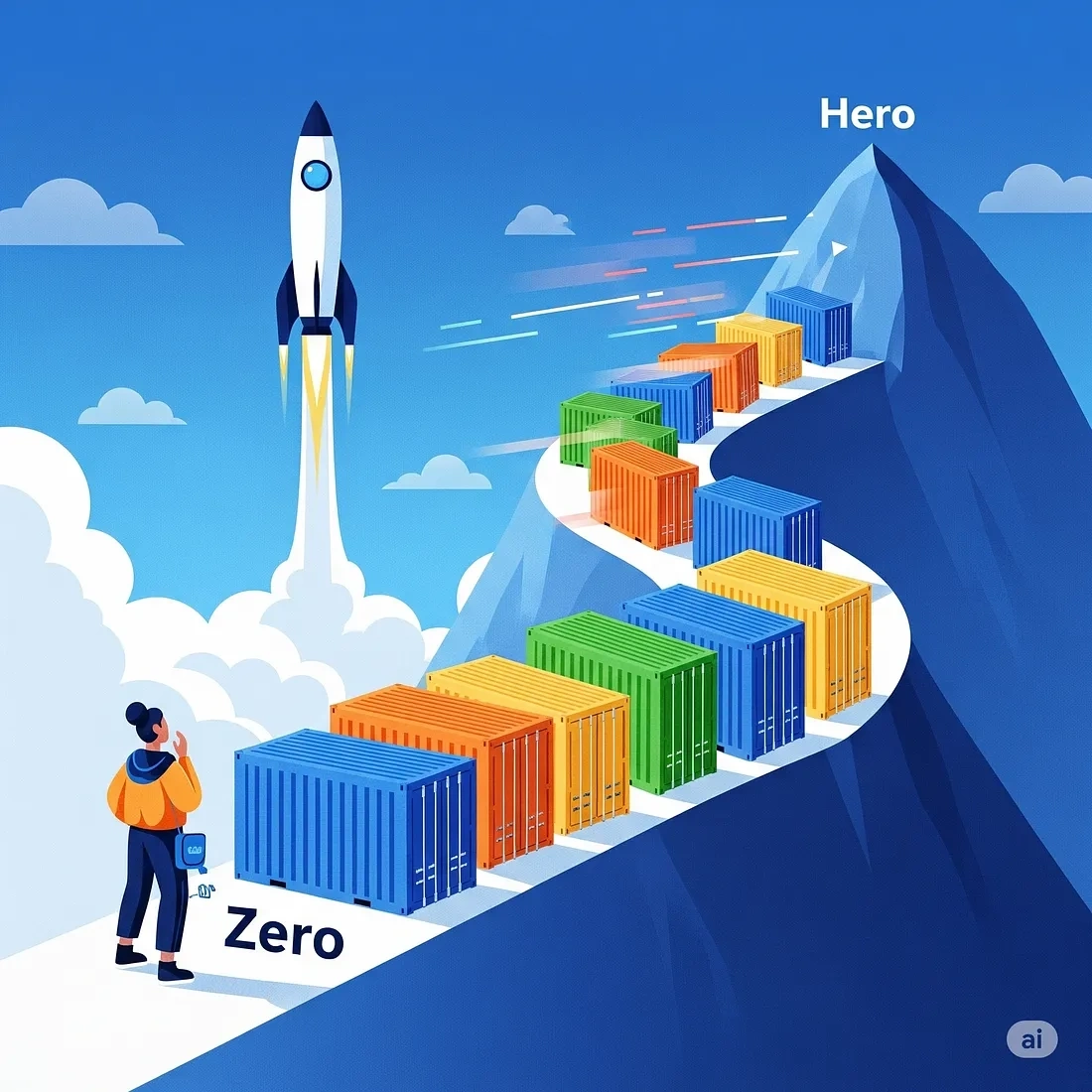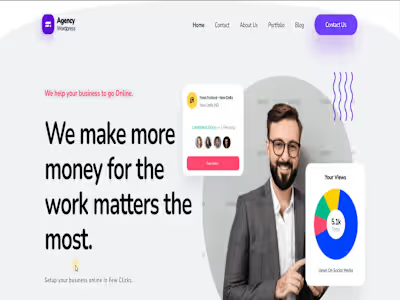Beginner's Guide to Container Foundations

🚀 From Zero to Hero: The Complete Beginner’s Guide to Container Foundations That Will Transform Your Tech Journey
8 min read
·
Aug 17, 2025
--
I. Introduction: Solving the “It Works on My Machine” Nightmare.
Picture this: a developer, let’s call her Alex, has just finished a marathon coding session. For weeks, she’s been crafting a brilliant new feature for her company’s application. On her laptop, it runs like a dream — smooth, fast, and bug-free. With a sigh of relief, she packages up the code and sends it over to the quality assurance (QA) team for testing. A few hours later, the dreaded email arrives. “It’s broken,” the message reads, “We’re getting a
Dependency not found error."Alex is baffled. She runs the code again on her machine. It works perfectly. This is the classic, soul-crushing developer lament: “But… it works on my machine!”.
This scenario isn’t a failure of Alex’s code; it’s a failure of the environment. Her laptop had a specific version of a programming library that the testing server didn’t. Maybe her machine had a unique configuration file, or a slightly different operating system patch. These tiny, invisible differences between computing environments are a massive source of friction in the software world, leading to delays, frustration, and endless troubleshooting.
Now, imagine a different world — the world of global shipping. Before the 1950s, loading a cargo ship was organized chaos. Goods were packed in mismatched barrels, sacks, crates, and boxes of all shapes and sizes. It was slow, inefficient, and insecure. Then came the invention of the standardized shipping container. Suddenly, it didn’t matter if you were shipping bananas, car parts, or textiles; everything went into the same-sized steel box. These containers could be moved seamlessly from a truck to a train to a ship, anywhere in the world, because the infrastructure was built to handle one standard unit. This simple idea revolutionized global trade.
Software containers do for code what the shipping container did for cargo. They provide a standard, predictable, and portable way to package and run applications.
This guide will unpack that “magic box.” By the time you finish reading, you will understand what containers are, why they have become an industry standard for companies big and small, how they differ from their older cousin, the virtual machine, and how tech giants like Google and Netflix use them to power services you use every day. More than just a technical tool, this technology represents a fundamental shift in how we build and deliver software. By creating a standardized, unchangeable unit of deployment, containers serve as a common language — a peace treaty, even — between development and operations teams. They help break down the traditional walls that cause the “it works on my machine” problem, paving the way for the collaborative, efficient workflows that define the modern DevOps culture.
Welcome to the Container Revolution!
Imagine you’re moving to a new house. Would you rather pack everything loosely in boxes that might break, mix up, or not fit in your new space? Or would you prefer standardized, secure containers that can be easily moved anywhere and work perfectly every time? That’s exactly what containers do for software applications!
Today, we’re diving deep into the fascinating world of containers — one of the most revolutionary technologies that’s transforming how we build, ship, and run applications. Whether you’re a complete beginner or someone who’s heard the buzz but never understood the “why,” this guide will give you rock-solid foundations.
🔍 What Are Containers? (The Foundation You Need to Know)
At its core, a container is a lightweight, standalone package that includes everything needed to run an application: code, runtime, system tools, libraries, and settings. Think of it as a self-contained digital “shipping container” for your software.
Unlike traditional applications that depend heavily on the specific environment they’re installed in, containers create a consistent, isolated environment that works the same way whether it’s running on your laptop, a test server, or in the cloud.
Key Characteristics of Containers:
Lightweight: Share the host operating system kernel
Portable: Run consistently across different environments
Isolated: Applications run independently without interference
Efficient: Start up in seconds, not minutes
Scalable: Easy to replicate and manage multiple instances
💡 Why Do We Use Containers? (The Game-Changing Benefits)
1. Lightning-Fast Development and Deployment
Docker containers can be created and started in seconds, compared to virtual machines that might take up to a minute to boot. This speed revolutionizes development workflows, enabling rapid testing, deployment, and scaling.
2. “It Works on My Machine” Problem = Solved
Containers eliminate environment inconsistencies. Your application runs the same way in development, testing, and production because the container packages everything it needs.
3. Resource Efficiency That Saves Money
Containers are incredibly efficient with system resources. You can run more workloads on the same hardware compared to traditional virtual machines. This translates directly to cost savings in infrastructure.
4. Perfect for Modern DevOps
Containers excel in continuous integration and continuous delivery (CI/CD) workflows. Developers can work in standardized environments, push to testing, fix bugs quickly, and deploy to production seamlessly.
5. Microservices Made Simple
Containers break down applications into manageable pieces that can be handled individually. You can update and maintain one container without affecting other parts of your application.
⚡ Hypervisor vs Docker Engine: The Ultimate Showdown
Understanding the difference between hypervisors and Docker Engine is crucial for making the right technology choice.
Hypervisor: The Heavy-Duty Virtualization Champion
A hypervisor creates complete virtual machines, each with its own full operating system. There are two types:
Type 1 (Bare Metal): Runs directly on hardware
Type 2 (Hosted): Runs on top of an existing operating system
Architecture: Hardware → Hypervisor → Guest OS → Applications
Docker Engine: The Lightweight Container Maestro
Docker Engine sits directly on the host operating system and creates containers that share the kernel. It coordinates between containers and the underlying OS, whether physical or virtual.
Architecture: Hardware → Host OS → Docker Engine → Containers
👏 Loved This Container Journey?
If this blog just turned your “container confusion” into “container confidence” — let’s celebrate! 🎉
Hit that clap button like you’re celebrating a successful Docker deployment! Your applause helps this knowledge reach more curious minds just like yours.
Share it, save it, or simply smile — every interaction fuels our mission to make tech as friendly as your morning coffee. ☕
Keep containerizing, keep learning, keep being awesome! 🚀
Where to Use a Docker Engine and Where to Use a Hypervisor
🎯 When to Use Docker Engine vs Hypervisor
Choose Docker Engine When:
Microservices Architecture: Building cloud-native applications
Rapid Development: Need fast iteration and deployment cycles
Resource Optimization: Want to maximize hardware utilization
DevOps/CI/CD: Streamlining development workflows
Scalability: Need to quickly scale applications up/down
Same OS Requirements: All applications run on Linux/same OS
Choose Hypervisor When:
Legacy Applications: Running older applications that need specific OS versions
Multiple Operating Systems: Need Windows, Linux, and other OS simultaneously
Strong Isolation: Security-critical applications requiring complete separation
Desktop Virtualization: Creating multiple desktop environments
Testing Different OS: Need to test across various operating systems
Compliance Requirements: Industry regulations requiring complete isolation
🌟 Real-World Examples: Where They Shine
Hypervisor Success Stories:
1. VMware vSphere in Enterprise Data Centers
Why chosen: Market leader with advanced features like vMotion, Storage vMotion, and Fault Tolerance
Use case: Large enterprises running thousands of VMs with different operating systems
Benefits: Centralized management, live migration, high availability
2. Microsoft Hyper-V in Corporate Environments
Why chosen: Seamless integration with Windows Server ecosystem
Use case: Organizations heavily invested in Microsoft infrastructure
Benefits: Cost-effective virtualization with familiar management tools
3. Oracle VM VirtualBox for Development
Why chosen: Free, stable, supports multiple guest OS
Use case: Developers testing applications across different operating systems
Benefits: No cost, good performance, snapshot capabilities
Docker Engine Success Stories:
1. Netflix’s Microservices Architecture
Why chosen: Need to deploy hundreds of services independently
Use case: Streaming platform serving millions of users globally
Benefits: Rapid scaling, independent service updates, resource efficiency
2. Spotify’s Development Workflow
Why chosen: Enable fast, consistent deployments across teams
Use case: Music streaming with frequent feature releases
Benefits: Standardized environments, quick rollbacks, team autonomy
3. Uber’s Dynamic Scaling
Why chosen: Handle massive traffic spikes during peak hours
Use case: Ride-sharing platform with unpredictable demand
Benefits: Auto-scaling, cost optimization, faster deployment
❓ Common Doubts and Expert Answers
Q: Are containers secure enough for production?
A: While containers share the host kernel (making them less isolated than VMs), they provide robust security when properly configured. Use security best practices like running containers as non-root users, scanning images for vulnerabilities, and implementing proper network policies.
Q: Can I run containers on Windows?
A: Absolutely! While Docker originated on Linux, Windows Server Containers and Docker Desktop for Windows make containerization fully supported on Windows environments.
Q: Which is faster — containers or VMs?
A: Containers are significantly faster. They start within seconds and have minimal overhead, while VMs require booting an entire OS, resulting in longer startup times and higher resource consumption.
Q: Can containers replace VMs completely?
A: Not entirely. Both technologies complement each other. Many organizations use VMs as the host environment for containers, combining VM flexibility with container efficiency.
Q: What happens if the host OS crashes in containers?
A: If the host OS crashes, all containers crash too, since they share the kernel. This is why proper infrastructure design with multiple hosts and orchestration (like Kubernetes) is crucial for production systems.
Q: Are containers suitable for databases?
A: Yes, but with considerations. Stateful applications like databases can run in containers (examples: MariaDB, MongoDB, MySQL, PostgreSQL), but require proper persistent storage and backup strategies.
Q: How do containers handle different application dependencies?
A: Each container packages its own dependencies, eliminating conflicts. Multiple containers can run different versions of the same software without interference, solving the notorious “dependency hell” problem.
🚀 Your Next Steps in the Container Journey
Now that you understand the foundations, here’s how to continue your container journey:
Start Small: Try Docker Desktop and containerize a simple application
Practice with Examples: Explore official Docker samples for different frameworks
Learn Orchestration: Investigate Kubernetes for managing container clusters
Understand Security: Study container security best practices
Explore Cloud Services: Try managed container services like AWS ECS or Google Cloud Run
🎉 Conclusion: You’re Now Container-Ready!
Containers represent a fundamental shift in how we think about application deployment and infrastructure. They’re not just a trend — they’re the foundation of modern software development, enabling the cloud-native applications that power today’s digital world.
Whether you choose Docker Engine for its lightweight efficiency or hypervisors for their robust isolation, understanding both technologies gives you the power to make informed decisions that can transform your projects and career.
The container revolution is here, and now you’re equipped with the knowledge to be part of it. Welcome to the future of software deployment! 🎯
Ready to dive deeper? Start experimenting with Docker today and see firsthand why millions of developers have embraced the container revolution.
I hope this guide has helped you to understand the foundations of containers. They are a powerful technology that is changing the way we build and run software. Happy containerizing!
Like this project
Posted Oct 4, 2025
A comprehensive guide on container technology, its benefits, and applications.
Likes
0
Views
2
Timeline
Aug 16, 2025 - Aug 17, 2025






